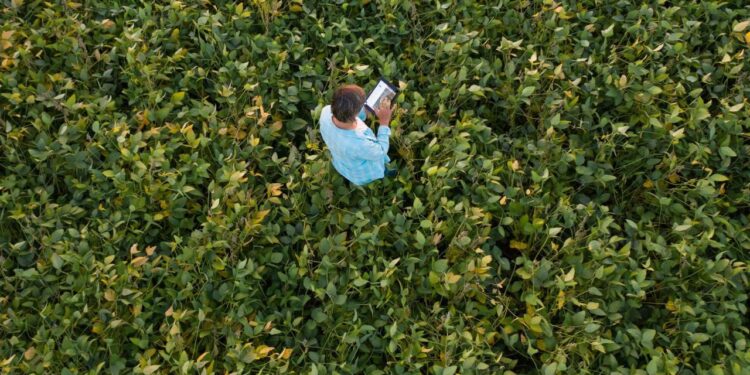The food industry is undergoing a significant transformation, propelled by the burgeoning popularity of plant-based proteins, as consumers increasingly prioritize health and sustainability.
The plant-based protein industry is predicted to grow to an $42.5 billion market by 2034, up from $18.6 billion in 2024. This growing market opportunity has led to a frantic race among food companies trying to find the best alternative proteins to incorporate into their product lines.
As one of the few complete plant-based protein sources, soy remains a top choice for consumers. A complete protein means that it contains all nine essential amino acids needed by the body to make protein, the way all animals proteins do. Food companies can also benefit from the U.S. Soy industry’s sustainability halo to attract new customers.
Delivering supply and performance
Over the past 40 years, U.S. soybean production has more than doubled with fewer acres available for farmland. U.S. soybean yields are predicted to continue growing by more than half a bushel per acre per year.
Beyond availability and affordability, the mighty soybean has so much more to offer.
In a comparison of 19 plant protein sources, soy protein was rated “excellent” on crop supply as well as protein concentration, protein quality, functionality and commercial stage, reinforcing its leadership position as a versatile, nutritional and functional protein solution for plant-based food innovations.
Focusing on protein quality and health benefits
The conversation around proteins has become increasingly specific over the last few years. Consumers prioritize protein quality and its health benefits. A recent customer study revealed that most consumers (56 percent) say it’s important or very important that plant-based proteins be complete, offering nutrition comparable to animal protein.
U.S. soy protein contains folate, potassium and fiber, and is equivalent in protein quality to animal protein. As a complete protein, soy protein is higher in quality compared with nearly all other plant-based protein sources, which often lack one or two essential amino acids.
Research has found that consuming 25 grams of soy protein a day, as part of a diet low in saturated fat and cholesterol, may reduce the risk of heart disease. In general, diets that rely mostly on plants for protein have been linked to a lower risk of stroke, heart disease and early death.
Winning with sustainable solutions
U.S. soybeans are at the forefront of food innovation as a sustainable, nutritional powerhouse, providing the food industry with better-for-you ingredients that also contribute to preserving natural resources for generations to come.
Around 98 percent of U.S. farms are family farms. This means many farms are passed down through generations – including the soil the crops are grown in. U.S. soybean farms have led the industry in implementing resource conservation practices. In fact, between 1980 and 2020, U.S. soybean farmers have increased soy production by 130 percent while increasing land efficiency by 48 percent, energy efficiency by 46 percent, water efficiency by 60 percent and soil conservation by 34 percent.
“I am proud to be one of the many U.S. soybean farmers employing sustainable farming practices. We are putting more effort and investment than ever before into reducing greenhouse gas emissions and water usage,” said Laurie Isley, Michigan soybean farmer.
U.S. soy is a sustainable protein ingredient with a low carbon, land use and energy footprint. When compared with other plant-based proteins, U.S. soy provides more protein per acre and uses less water per ton.
Climate-friendly agriculture is one aspect of U.S.-grown soy’s sustainability – technology is another. Using biotechnology, U.S. soybean growers can cut back on herbicides and decrease weed and insect pressure, both of which contribute to increased yields of high-quality soybeans.
Through precision farming, GPS, AI and satellite mapping, farmers can improve their seed planting and spraying while optimizing their land more sustainably. According to Jack Cornell, director of sustainable supply at the United Soybean Board, “AI will be able to produce real-time yield maps, which will provide immediate feedback on how to manage that field and how the yields have impacted profitability.”
As competition drives innovation, U.S. Soy aims to be a leader in building the new normal of what sustainable, nutritious and agricultural food systems can look like. As a top plant-based protein choice that checks the boxes for sustainability, functionality and reliability, soy offers a health and sustainability halo for food companies to leverage and drive sales by sourcing U.S.-grown soy protein for their products.




